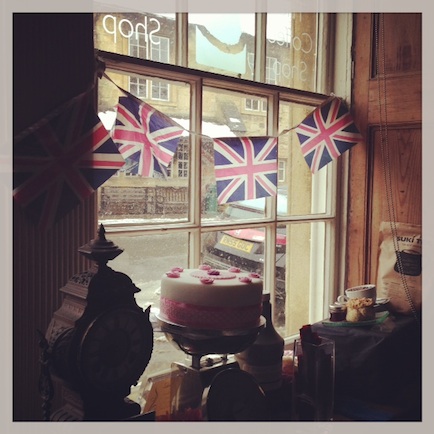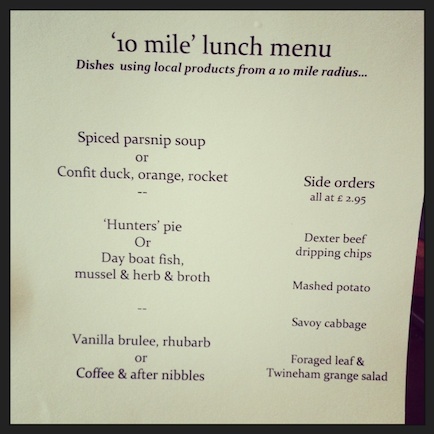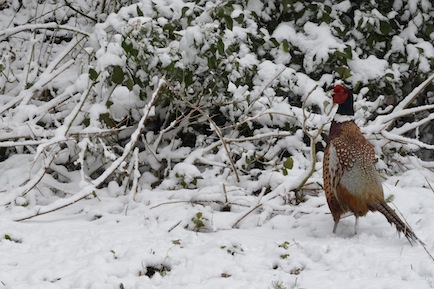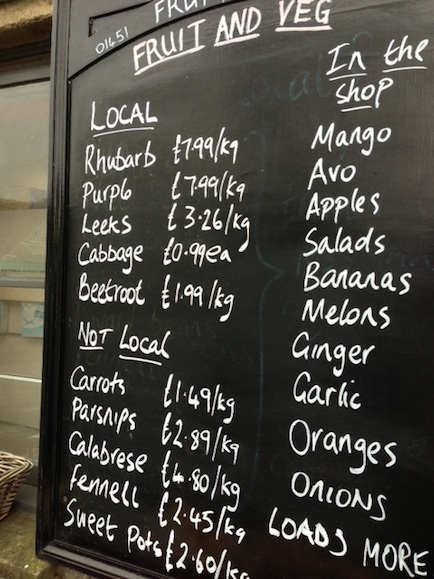Britain’s food has long been a joke around the world, especially where I live on the West Coast of California with access to fresh produce that thrives in our mild climate, and superb locally-raised meat and freshly-caught fish. On my recent trip to the UK I decided to look through a different lens to see whether the overall quality of food served by restaurants had improved and more importantly (for Alice Dishes), if the local, slow food movement had a notable presence.
First, eating out. The good news is there’s a plethora of ‘gastro pubs’ and new, tastefully designed restaurants cropping up all over the place. The bad news is, that a venue that looks good, doesn’t necessarily serve great food. Design and style seems to matter more in the U.K. vs. in the U.S. (I know, that’s a gross generalization), which maybe why this disconnect exists. This is particularly true of the many restaurant chains, from Pizza Express to Gourmet Burger Kitchen.
Britain has a ‘take it as it comes’ culture, so asking if a dish contains wheat, dairy or eggs, can often mean you’re greeted with puzzled looks. Same with asking for items to be served on the side or substituted. The request alone means you’re a fussy, high maintenance American. (Almost) guilty as a charged, but I’ve come to enjoy American levels of service.
Talking of service, in most places it was ridiculously slow and we often had to wait 45 minutes to an hour for our food to arrive. It explains, among other things, why two to three hour business lunches are still fairly typical. My friends and family pointed out that without the tipping system that’s in place in the U.S., there’s much less incentive for waiters to speed things up or raise the service bar.
Now to the food itself. Overall, the standard has improved and the whole country seems to be quite food-mad, with multiple TV shows like “The Great British Bake-Off” leading to a spin-off: “Bread”. And we shouldn’t forget stalwarts like Delia Smith and figures like Jamie Oliver, Nigella Lawson and Gordon Ramsay, who have risen to dizzying heights over the last 10-15 years and done much to improve Britain’s food reputation.
The slow food movement would be proud: food producers are getting credited on menus from chains to independent gastro pubs. It’s always better to know where your food is coming from. The Marquis at Alkam on the South Coast even featured food that was sourced from within ten miles of the restaurant, including fish, meat and foraged leaves. Unfortunately, the poor service, tiny portions and totally uncooked rib eye, which we had been told would be “pink”, somewhat diminished the experience.
We had some of our best meals at pubs in the Cotswolds and spotted plenty of pheasants in the snowy hedgerows and on the menus. Watch out for a separate post on these pubs.
And a brief word on buying organic, local food in stores and supermarkets. Across the country you can still find small, independent specialist purveyors: bakeries, butchers, fishmongers and “greengrocers” who sell fruit and veg. There’s nothing better than being able to focus on one part of your shopping list at a time and talking to an expert about what they’re selling.
I saw a sign I loved outside a greengrocer – it really clearly noted what produce was local and what was not. In supermarkets, it was harder to find the organic fruit and vegetable although it was there, and with England in the middle of one of its coldest winters ever, much of the produce is imported from Europe and beyond. It made me appreciate all over again, how lucky we are to live in Sonoma with farms on our doorstep.









Loving my armchair trip to snowy England, thank you for tasking us there, Alice. Photos are fab!
Thank you! I was thinking of you too.
A very enjoyable read. I like the telling details and the photos, of course. What was Ben’s assessment of British cuisine?